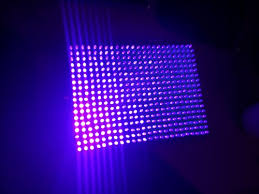The chip wavelength of LED can be adjusted to produce both visible and invisible light bulbs. In light of lower production cost, companies are developing more UV LEDs, further driving the growth of ultraviolet lamps. It is estimated the market value of ultraviolet lamps will continues to increase at a CAGR of 13.32% from 2017 to 2021.
Conventional ultraviolet fixtures require lens to adjust light distribution and contain mercury that is harmful to the environments. In comparison, using UV LED as the light source make the fixtures’ lifetime longer, light distribution evener, and power consumption less. Although the production cost is high at the beginning, it saves 50% of the repair cost, at the end of the day lowering the overall cost.
The wavelength of ultraviolet is in a range between 100 nm and 400 nm. UV LED is widely-used for sterilization, 3D printing, curing and other medical purposes. Wavelengths of most of the UV LEDs for commercial use is in a range of 365-400 nm, also known as the UVA spectrum, which is mostly applied in consumer electronics and medical tools to cure adhesive.
With the fact that companies are maturing their UVC LED technology, more UV LED products can also replace traditional ultraviolet fixtures in terms of disinfection and sterilization.
UVC LED instrument needs to be operated in an environment with pure ozone. It is smaller and less power hungry, and enables more design options. UV LED lamps can be portable, embedded into other equipment, and have effective disinfection performance. For mid- and small-sized labs and hospitals, using UV LED sterilizers saves a scalable amount of operational costs.
One problem of UVC LED is heat dissipation. The light conversion of UV LED is only 5%. The other 95% is converted to heat and causes the chip to overheat and fail, which needs to be resolved.





 CN
TW
EN
CN
TW
EN






